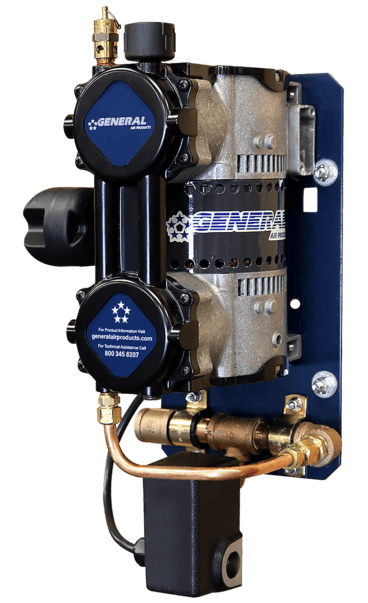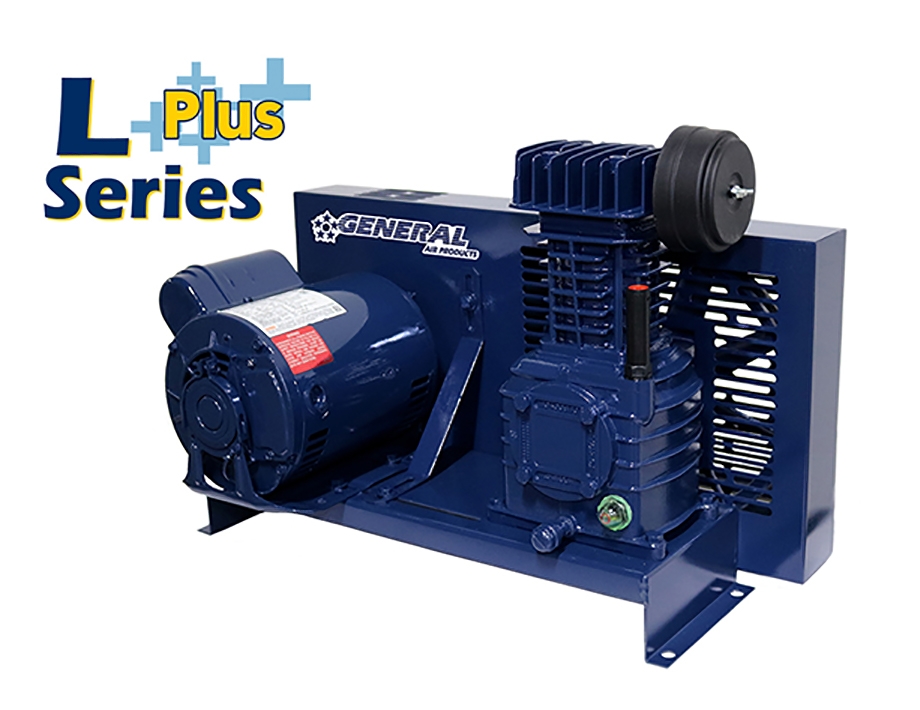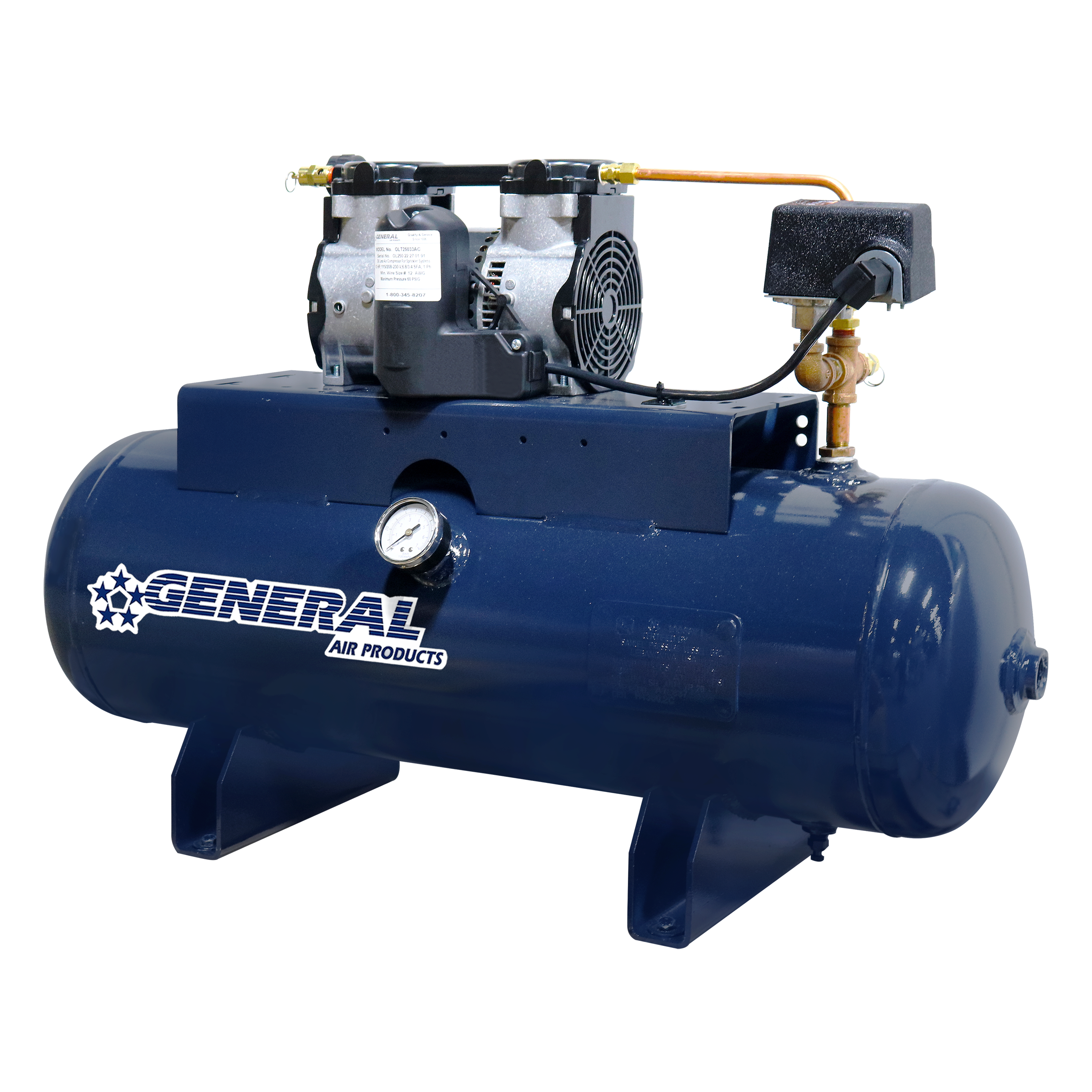Why the heck is my compressor turning on and off, and on and off, and on and off?!
Sometimes an air compressor will turn on and off rapidly in an unending fashion, this is an occurrence known as short cycling. The good news is that it does not mean that your air compressor is broken or defective, however there is something going wrong that requires immediate attention so as not to permanently damage the air compressor on your dry pipe sprinkler system. The sections below describe how to resolve this problem for each of our compressor types.
How to Troubleshoot a Short Cycling OL Plus Series Compressor
When an OL series oil less riser mounted air compressor short cycles it means there is a leak some where between the air compressor and the dry pipe system check valve. We recommend the following procedure:
- Leak test the pressure switch line from the bottom of the switch to the discharge tee on the compressor. Also listen for any air leaking out of the switch, it could have a ripped diaphragm.
- Leak test the line from the discharge tee of the compressor to the system check valve. Pay special attention to any fittings or valves in this line.
- If no leak is found then the compressor air check valve must be inspected. The check valve looks like a brass fitting and on the 1/6HP and 1/3HP it is located between the two tees in the compressor trim, on the 1/2HP, 3/4HP and 1HP it connects directly from the head into the discharge tee. This check valve is ¼” x ½” (Part # CV2550) and has a ball and spring. On the 1.5HP and 2HP there is a nipple in the head that connects to the check valve and then into the discharge tee. This is a 3/8” x ½” (Part # VC33T3850/OL) with a poppet and spring. You are looking for any excess pipe dope, tape or scale that is preventing the check valve from seating properly. If after inspection and cleaning the compressor is still short cycling replace the check valve.
Leak Test Demonstration Video
How to Troubleshoot a Short Cycling L Series Base Mounted Lubricated Air Compressor
- Leak test the piping from the air maintenance device (AMD-2) to the system check valve. Fix leaks as necessary.
- If no leak is found, the check valve on the air maintenance device is most likely the problem. The check valve is located in the maintenance line between the unloader tee and last elbow. Check for debris that may be preventing the valve from seating properly, if after cleaning the compressor is still short cycling the check valve needs to be replaced (Part # CV2525)
How to Troubleshoot a Short Cycling Tank Mounted Air Compressor (Lubricated or Oil Less)
- Isolate the tank by shutting the valves on the air maintenance device (AMD-1). Perform a leak test on all fittings including the pet cock on the bottom of the tank.
- Leak test the line from the outlet of the tank to the system check valve.
- If the compressor builds pressure then shuts off while air continues to bleed from the unloader valve on the pressure switch that means the check valve is leaking. The oil less tank mounted units do not have an unloader but if no leaks are found on the unit or in the piping then the check valve is leaking. You can locate the check valve by following the discharge piping out of the head of the compressor to where it goes into the tank. What looks like a brass fitting is actually the check valve (the nose of the check valve is actually inside the tank). The check valve has a disk and spring and the disk may not be seating properly. Try tapping on the check valve and it may reseat. If it does not reseat, replace the check valve (OLT Series oil less tanks use part # VC303838; LT Series Lubricated Tank compressors: LT200 through LT1300 use part number VC3T5050, pre-2004 versions should use part VC35038TA, LT1600 through LT2500 use part # VC3T7575 – and if you are not sure what you have or what you need please give us a call, that’s what we are here for!).
Note: For all non-standard units, consult factory.
There is one other instance where short cycling may occur and the symptoms are quite different from the examples above. If the differential setting on the pressure switch is too close it can also cause short cycling but it is totally different in that you would see electrical arcing and the switch making a banging noise, the cycling is also very erratic. In this case we suggest you view our Pressure Switch Adjustment Video or call us as 800-345-8207.


